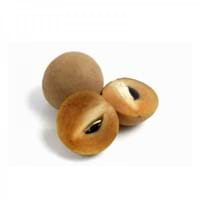Health Benefits
Arthritis prevention, Cancer prevention, Gout treatment, Heart care
Anti-inflammatory properties, Arthritis treatment, Regulates Blood Sugar, Unknown
General Benefits
Anti-inflammatory properties, Boosts immune system, Controls blood pressure, Controls blood sugar levels, Cures fever, Digestive aid, Sore throat treatment
Boosts immune system, Controls blood sugar levels, Digestive aid
Skin Benefits
Reduces wrinkles, Treatment of acne
Nourishes skin, Protects skin from oxidative stress
Hair Benefits
Promotes longer and healthier hair, Shiny hair
Prevents hair loss, Promotes longer and healthier hair, Regulates hair growth
Allergy Symptoms
Anaphylaxis, Digestive Problems, Itching, Skin Rashes, Swelling
Asthma, Red rash, Swelling of mouth, tongue or lips
Side Effects
Allergic reaction
Diarrhoea, Vomiting
Best Time to Eat
As a snack in the late afternoon, Don't consume at night and before bed, Eat the fresh ones, avoid mixing with any other foods, don't eat after meal., Morning time (before lunch)
As a snack in the late afternoon
Vitamin B5 (Pantothenic Acid)
Vitamin C (Ascorbic Acid)
Vitamin E (Tocopherole)
Not Available
Vitamin K (Phyllochinone)
Not Available
Lutein+Zeaxanthin
Not Available
Phytosterol
Not Available
Calories in Fresh Fruit with Peel
Calories in Fresh Fruit without Peel
Not Available
Not Available
Calories in Frozen Form
Not Available
Calories in Dried Form
Not Available
Calories in Canned Form
Not Available
Calories in Juice
Not Available
Calories in Jam
Not Available
Calories in Pie
Not Available
Season
Autumn, Summer, Winter
Winter
Varieties
Green Anjou, Red Anjou, Bartlett, Red Bartlett, Bosc, Comice, Concorde, Forelle, Seckel and Starkrimson
Bush Table Queen, Heirloom Table Queen, Festival Hybrid, Early Acorn Hybrid, Table Ace, Ebony and Cream of the Crop
Seedless Variety
Yes
Not Available
Color
Yellow
Dark green, Green-yellow, Orange green
Inside Color
White
Not Available
Taste
Crunchy, Sweet
Sweetish
Origin
China, Japan
Central America, North America, Unknown
Soil Type
Clayey, Loamy, Sandy
Well-drained
Climatic Conditions
Cold, Hot, Without frosts
Cold, Sunny
Facts about
- The first pear tree was planted in North America in 1620.
- The Chinese considered the pear fruit to be a symbol of immortality.
- This fruit was used as a natural remedy against nausea in ancient Greece.
- It was named as Acorn Squash for its resemblance to a large ribbed acorn.
- It is said that squash was being grown in Mexico as long as 10,000 years ago.
- It was the first food cultivated by native American Indians.
Spirits
Yes
Not Available
Cocktails
Yes
Not Available
Other Countries
Argentina, Belgium, India, Italy, Japan, South Africa, Spain, Turkey, United States of America
Egypt, India, Iran, Italy, Mexico, Russia, Turkey, Ukraine, United States of America
Botanical Name
Pyrus communis
Cucurbita Pepo
Synonym
Not Available
Winter Squash
Subkingdom
Tracheobionta
Tracheobionta
Division
Magnoliophyta
Magnoliophyta
Class
Magnoliopsida
Magnoliopsida
Subclass
Rosidae
Dillenhidae
Order
Rosales
Cucurbitales
Family
Rosaceae
Cucurbitaceae
Generic Group
Rose
Not Available
Compare Pear and Sapota
It is important compare Pear and Sapota as both the fruits have a different nutritional value. Their comparison can be done on the basis of their vitamin and mineral content, calories, benefits as well as characteristics, making it easier for us to choose the best fruit for our diet. Their general health benefits are as follows:
Pear Benefits: anti-inflammatory properties, boosts immune system, controls blood pressure, controls blood sugar levels, cures fever, digestive aid and sore throat treatment.
Sapota Benefits: boosts immune system, controls blood sugar levels and digestive aid.
Fruits are also used as a remedy for various hair problems. The hair benefits of Pear are: promotes longer and healthier hair and shiny hair and hair benefits of Sapota are: prevents hair loss, promotes longer and healthier hair and regulates hair growth. Some fruits are known to cause allergic reactions. The allergy symptoms of first fruit are: anaphylaxis, digestive problems, itching, skin rashes and swelling and the symptoms of second fruit are: asthma, red rash and swelling of mouth, tongue or lips. Get sorted Pear vs Sapota comparison with the help of fruit comparison tool by fruitvs.com.









